Breathe, Breathe and Breathe
When I teach scuba dive, one question that is almost always asked by the newbies is “how long can the air tank last?”
When I teach scuba dive, one question that is almost always asked by the newbies is “how long can the air tank last?”
The answer is simple: for a good dive, the goal is always to maximize your time underwater by prolonging the air consumption rate. The air consumption rate will depend on how you breathe and move underwater. Broadly speaking:
The more vigorous movements you make, the more air you need to consume - if you move a lot (like kicking very hard), you are likely breathing shorter and faster. As a result, you will use up the air tank faster. If, however, you move slowly and breathe in a consistent pace, your air tank can last longer.
The more you move against a force, the more air you need to consume - If you are diving against the current, you will need to kick harder in order to move forward and, therefore, you will breathe faster and consume more air. However, if you are drift diving (i.e. let the current pushes you), you will be moving very little and, therefore, you will breathe slower and consume less air.
The more stressed you are (emotionally and physically), the more air you need to consume - When you are anxious and nervous, your breath is short and faster. When you are calm and relaxed, your breath is long and slower. During a dive, the slower you breathe, the lower your heart rate – and in turns, you become more calm and relaxed.
The more pressure you are under, the more air you need to consume - If you dive in shallow depth (like less than 15 metres), you are under less pressure and, therefore, can breathe smoothly and slower. However, if you go deep (like 20 – 40 metres), the pressure underwater will cause the air to become denser and therefore, harder to breathe. The tip is to breathe in a deliberately slower and longer pace.
Whether you are a scuba diver or not, by now you should see a pattern on how our breathing can be influenced by our own external and internal environments.
Likewise, it is easy to make the metaphorical correlation between being underwater and being above water. For the latter, we all are subject to pressure, stress, anxiety and negative energy and emotions. The breathing strategy for scuba diving is totally relevant and applicable to our daily life.
An amazing wonder of our human body is that we can consciously control our breathing. In fact, when we can control our breathing, we are aiding ourselves to become resilient.
In short, breathing is the foundation to good health and movement.
Here is a simple breathing exercise that you can do and with some variations that you can add later in your own time.
1-minute Breathing Exercise:
Sit on a chair with your back fully supported
Close your eyes to help you focus
Place the tip of your tongue against the back your upper teeth
INHALE through your nose into your lungs and to its maximum capacity
EXHALE through your nose, emptying your lungs like deflating a balloon
Repeat continuously for 1 minute (or until you want to stop).
It takes only 1 minute a day of your time as a starter. As you start to feel the benefits, you will naturally create more time for yourself to just do these breathing exercises.
Some additional variations that you can add later.
Variation 1 - Pace your inhaling and exhaling with specific length of time. For instance, INHALE and count 1 to 3 as you are inhaling; then EXHALE and count 1 to 3 as you are exhaling. Make it a smooth transition. Over time, as you become more familiar, you can extend the length of time for inhaling and exhaling.
Variation 2 - For scuba divers, you can switch to breathing through your mouth. At the same time, you INHALE by sipping air in slow motion and counting 1 to 5 or more until you fill up your lungs. Then you EXHALE by blowing air in slow motion and again counting 1 to 5 or more until your lungs are empty.
I would love to hear from you on your experience – even if you don't get the breathing exercise and have more questions about it. Please do get in touch by email to info@luxenova.co or by leaving a comment here.
Author: Stephanie Luo
Life is a ship - the Confession of a Diving Junkie!
When I first picked up scuba diving, I instantly became (and still am) addicted to the sensations of neutral buoyancy. I love it because...
“Life is a Ship, Seize it” ~ said a Hong Kong Admiralty Court Judge
Water sports are one of the crown jewels of Hong Kong living, especially, in the heaty summer time. While most people stay above water, I love going underwater to scuba dive – whether for fun or for training.
For non-divers, I would articulate my passion (or chronic addiction) for being underwater this way - when I am underwater,
my mind is focus and yet relaxed;
my body is weightless;
I breathe consciously to maintain the neutral buoyancy;
my curiosity goes wild;
I see an entirely different world;
when I surface, my perspective has changed;
I feel whole again; and
I appreciate being in the present moment even more.
When I first picked up scuba diving, I instantly became (and still am) addicted to the sensations of neutral buoyancy. I love it because my physical body is working in harmony with the forces of nature - gravity and water drag - through my breathing and finning. Once I am present, I am enjoying the underwater environment.
I love being in the state of calm, especially when my surrounding environment is chaotic. Throughout my legal and banking profession, it has always been my “secret” personal goal – striving to stay calm and dispassionate in the midst of challenges and to overcome these with grace and elegance.
My passion for scuba diving has become the support system for my career and personal development - in a holistic way. It is where I connect with my spirituality.
Likewise, I was steered away from my corporate job simply because I fell passionately in love with executive coaching and leadership development. I am in this new game with the mission to work with corporate executives to create their own support system to maintain and enhance the quality of life and wellbeing. As they are more in touch with their own human elements, they will become better leaders and make the world better.
Now with my “executive coach” hat on, I invite you to ponder on these:
* What tickles your passion in life?
* What has your passion taught you about yourself?
* What do you do (or can you do) to live that passion in your roles (as an executive, son, daughter, lover, parent etc)?
I would love to hear your thoughts. So please do feel free to get in touch or share your comments.
Contributor: Stephanie Luo
How Fragrances Enhance My Creativity On and Off the Mat
A dear friend of mine, Céline, is a perfumer. She goes through life following her nose, so to speak; apprehending her environment with her sense of smell.
A dear friend of mine, Céline, is a perfumer. She goes through life following her nose, so to speak; apprehending her environment with her sense of smell.
She has never been to Hong Kong and recently asked me to describe the city from an olfactive point of view.
I started by telling her that:
HK is a city where people’s senses are constantly stimulated.The sense of smell is probably the one that people notice the less.Let’s start by the obvious, the malls.
Each has a signature smell, as do hotels and most modern buildings.
IFC used to smell like green tea when I moved here, and now their fragrance is a clean cologne (very close to CK One).
The Ritz Carlton is a traditional gentleman, with its woody fougere smell. K11 has a gourmand scent like sweet caramel and vanilla.
Hong Kong gets more interesting if you start walking on the streets.
In Sai Yin Pun, Queen’s Road West smells like dried fish and Chinese herbs.
The harbour on Tsim Sha Tsui side smells like tepid water, a very humid and penetrating smell.
The part of Tsim Sha Tsui where I live has many smells of food and people mixing all the time depending on which street corner: the clean smell of household products coming out of the supermarket, cold smoke and ashes on Prat Avenue, coconut waffles on Carnarvon Road, a potpourri of fragrances coming out of Sasa, the incense burning in a temple on Haiphong Road …
What struck me most from our conversation was that in describing to her the smells, I was intently focusing on my sense of smell and I was more present. It is very easy to go on autopilot mode when living in a city like Hong Kong for a while. Our senses get stimulated, overly and non-stop in this steroid-driven city.
I like to remind myself and my students how essential it is to be present in the here and now, present whatever we are doing. Our senses are a way to anchor our awareness in the present moment. We can repeat a mantra, light an incense, play a Tibetan bowl, choose a method that resonate with you.
To ensure that I am being present, I have created some ritual to help me reset and connect with my centre. For instance, after being out and about in the city, I go to my sanctuary corner , unroll my yoga mat, light a candle and then choose an incense to burn or a fragrance for my diffuser. I then sit down for a few moments with my eyes closed and senses inwards. I listen to my breath to help me tune in.
The simple act of sitting on my cushions starts the relaxation. The silence and fragrance help mereach a deeper level of awareness. As I sense further inwards, I become more present and eventually, the smell, noise and thoughts fade away. Then I meet myself in that sweet silent place.
Smelling the city for Céline reminded me once more how living with intent and awareness is crucial in our modern world. The fragrance you decide to smell, the food you choose to eat, the silence you surround yourself with. Everything counts. It also made me realise that my sense of smell is one of the most potent ones to enhance my creativity.
After this experience Céline and I decided to combine our passion for yoga and fragrances and offer a workshop at Luxe Nova; a nice afternoon (re)treat and rejuvenate yourselfwith yoga, fragrances and creativity. I will lead you through a yoga practice and guided meditations, and the tailor-made fragrances will activate your senses and intuition.
This unique combination of yoga and fragrances will help you become more connected with your inner self and gain clarity on your personal intention.
Join me and let your inspiration and your creativity flow.
Author: Virginie Morel
Virginie Morel will be hosting an afternoon workshop - Cultivate Your Creativity with Fragrances & Yoga.
Singing Bowls, Meditation & Neuroscience
Q: What do singing bowls, meditation and neuroscience have in common?
A: Mind wellness.
Q: What do singing bowls, meditation and neuroscience have in common?
A: Mind wellness.
In enhancing our wellbeing and quality of life, the first thing that we should address is the wellness of our mind. As it happens, mindfulness and meditation are the simplest approaches to maintain and sustain such wellness.
We have been conducting singing bowls sound baths as part of meditation sessions, on-site or off-site of Luxe Nova Lifestyle Studio. From the feedback of the participants, it has started to show us the common effects of the sound vibration, including:
It can stop the mind from wondering off and quieten the cluttered thoughts.
It creates an invisible blanket around the body to help it to slow down.
It relaxes the participants almost immediately, even though they have remained aware of the surrounding environment.
It is energizing – physically and mentally.
Many felt restful after the session.
Indeed, it is satisfying to watch the participants getting the immediate benefits from a session of singing bowls sound bath. At the same time, it has caused me to look further into the findings in neuroscience.
Traditionally, Tibetan singing bowls have been used for healing and meditation purposes. According to the traditional method, there are some specific requirements in the making of a singing bowl. For instance, each bowl must contain 7 types of metals: Gold, Silver, Copper, Iron, Mercury, Tin and Lead. Each metal is associated with one planet.
It is understood that each planet relates to various parts of our energetic anatomy – for instance, our chakras. Through sound vibration from each metal and the combination of these metals, our body get the healing physically and energetically.
Below is a table showing the relevant association:
It is evident that the sound vibration can filter the cluttered thoughts and calm the mind and body. When singing bowls (whether Tibetan or crystal bowls) are incorporated into a meditation session, the effect and benefit of the meditation are enhanced immediately.
There are tons of research on the correlation between meditation and our brain – in particular, what meditation can do to our brain, so that our quality of life is enhanced.
Here are a few interesting findings about our brain:
Neuroplasticity. Throughout our life, our brain has this amazing ability to reorganise itself by forming new connections between neurons and even growing new neurons in response to thoughts and experiences.
Relaxed egos. A study from Institute of Psychiatry, London, has shown with MRI scans as to how our brain activities change during the meditation. For instance, the front area of brain, which is associated with self-centeredness and egos, becomes relaxed during meditation.
Increased self-awareness. Another group of researchers (associated with Harvard) have also found that after their subjects have practiced a small doses of mindfulness mediation daily over a period of 8 weeks, they have found an increase in the gray matter in the area of the brain associated with self-awareness, compassion and introspection. They have also found a decrease in the gray matter in the area of the brain associated with stress and anxiety.
Rewire the brain’s default mode network. The default mode network of the brain means the network of active brain regions when we are awake. When this default mode network is firing up, it means that we are thinking about ourselves, worrying about what others’ perception of “me”, thinking about the future, regretting the past etc. In short, we stop focusing on the moment of “now”. A study from Yale has found that when people meditate, this default mode network is switched off. It also shows that people who meditate regularly have rewired this network, so that they focus more on the present moment.
Supposedly, with these scientific evidence, it should provide more comfort to you (the readers) and encourage you to meditate more regularly.
It is nice if you can meditate for a long time or even go on regular Vipassana meditation retreats. Frankly speaking, this is an ambitious goal and more likely to remain as an aspiration for many people.
The more realistic and achievable goal is to create a new habit of doing meditation regularly. All it takes is to be simple and spend as little as 5 minutes a day to meditate. When you do it regularly (or even better, daily), you will definitely notice and feel in yourself the changes.
Recently, we had the opportunity to do a singing bowls demonstration to the members of the Asia Society Hong Kong. It was a lovely evening to share with so many people the beauty and power of these singing bowls. Although the demonstration was a very short one, the feedback from the guests were similar – especially that they felt relaxed very quickly and some even felt energised.
And the best comment of the night was from a guest who is a professional musician and he called the sounds from these singing bowls “the essence of music”. To me, it was a beautiful encouragement to continue sharing my love and passion.
Contributor: Stephanie Luo
Some snaps from the Asia Society Hong Kong Members' Event
Mindfulness - a key to Leadership Development
Mindfulness is a useful tool and good starting point for you to get to know yourself and to master yourself.
Mindfulness is "being present". It is the process of what is happening within us and around us moment by moment. In essence, it is a "Mind Management" process - centering ourselves, allowing our mind to filter out the clutters and becoming more focus.
This is a leadership skill that must be mastered over time. You may wonder how would you know that you have mastered such fine art. One obvious telltale is to find that people follow you as a leader because of who you are and what you represent. It is a powerful position to be in - and such wisdom has already been told by Lao Zhi over 5000+ years ago:
To know the others is intelligence;
To know yourself is true wisdom;
To master the others is strength;
To master yourself is true power.
The concept of “emotional intelligence” was first introduced and articulated towards the end of 20th century. EQ became the buzz word for talent and leadership development. However, in 21st century, EQ is just the entry level of leadership development. We are now looking further into the individual leader’s “cultural intelligence” and “spiritual intelligence”. Ultimately, the world starts with “I” and “my perceptions” and then “how I relate to the others”. In the end, it becomes “One” and the “Oneness”.
In the corporate world, the “Oneness” is all about the team – my team, your team and our team etc. In other words, it is a simple math – that when each team member knows himself or herself well and able to master himself or herself, you have a powerful and high performing team.
Mindfulness is a useful tool and good starting point for you to get to know yourself and to master yourself. As you make it a part of your life journey, you will begin to identify and embrace each present moment of enjoyment (whether you are in a crowd or alone).
Another simple mathematic formula – when you are enjoying every present moment, you are creating and fulfilling a life journey that is filled with content, gratitude and happiness.
Contributor: Stephanie Luo
Kundalini - the Yoga of Awareness
...I could sum up all these benefits in one single word: AWARENESS
“The first step toward change is awareness.
The second step is acceptance.”
~ Nathaniel Branden
The other day, a friend of mine asked me what I love the most about Kundalini Yoga. Having practiced yoga for the last eleven years, my love and passion for yoga continue to grow. So, I wanted to tell her what makes this particular style different.
Instantaneously, these words came up:
Empowerment – radiance – presence – breath – surrender - letting go – meditation – chanting - feel good…and so on.
As I reflect further, it is clear that I could sum up all these benefits in one single word: AWARENESS.
Over the time, I have become more aware of my body and my surrounding. I am more mindful, whether “on” or “off” the mat. My newfound self-awareness continues even after the class is done. I usually feel the effects for a long time and each time, I can delve little deeper than before.
These effects are amazing:
my stress level is lowered;
I sleep better;
I am more patient;
I smile more;
I have less cravings; and
my mind became less busy.
Little by little, I am living a better life with a clearer sense of who I am. The transformations that I saw in myself have happened from the inside out and quite rapidly. It is a living and on-going transformation for the better.
I am so grateful for having found yoga (especially, Kundalini yoga). As a yoga teacher, it is my love and passion to share the practice and transmit the benefits to students, giving them the tools to empower themselves.
As Yogi Bhajan (who introduced Kundalini Yoga to the West) used to say often - “Doing is Believing”. One cannot fathom yoga through words – just like you have to smell a fragrance in order to appreciate the scent and the perfumer’s craftsmanship - you need to practice and experience yoga for yourself.
Intrigued and wanting to know more?
Allow your curiosity be your guide and come join me for a session of Kundalini Yoga or the other related activities.
Namaste, Virginie
Author: Virginie Morel
Own and honour the integrity of our body!
"...we should own the integrity of our body..."
When we strike the balance and create the clear mind-body-spirit connection, we are in the state of bliss and happiness. To reach this state, we have to start addressing the mind by setting our mindset in the positive, creative and uplifting state. Then, our body's own healing ability gets empowered and activated. As our mind becomes more connected with our body, our spirit becomes more open and brighter.
From an energy-begetting chat with Zosha recently, I was awestruck by something she said - "...we should own the integrity of our body..." I love it instantly as if it is the latest 'Top of the Pops'!
This powerful statement has brought back some memories from the time when I first moved to Hong Kong and the discovery of my hyperthyroidism condition at the time - and especially, the journey of taking control of my health.
I recall vividly that for a brief moment alone, standing in the lobby of the hospital whilst waiting for my sister to join me for the second consultation, I felt the extreme void of confusion and vulnerability. I was trying to understand how I got myself into such a state, since I had always been sensible about my diet and lifestyle (like eating healthy, regular yoga practice and swimming etc). I really thought that I had my stress level under control through the "healthy" lifestyle. Clearly, the test report said otherwise!
The next thing that Bri nailed into my head was that hyperthyroidism is not a terminal illness like cancer, but if I failed to get this hormonal imbalance condition under control, I would be serving a life sentence of never-ending medication, treatments and hospital-runs etc. The thought of “life sentence” made me more determined to “exterminate” this condition with all available resources – and the journey began…
In conjunction with the prescriptive medication, I was introduced to a massage therapist. In our first session, she went straight into the heart of the matter - negative emotions that have been neglected and stored in various parts of my body for too long.
I realised that while focusing on developing my legal profession at a City Law Firm, I did only the superficial bits to look after my body. All of my negative emotions were not processed properly and in that process, my body kept taking them on until it lashed out with hyperthyroidism.
That session of massage therapy was an extremely painful one - and the word "painful" is an understatement, given the amount of screaming and crying that came out of me! However, she helped me to rewire my mindset. With the guidance of the therapist, I started to apologise to my body for neglecting it and express my gratitude and love to my body. Miraculously, the pain started to disappear – and naturally, I repeated the same mantra whenever she hit the painful spot for the rest of the treatment!
Over the time, I started to learn more about how my body records different kinds of memories. I become more connected with my body - when any discomfort starts to surface, I would sit back and communicate with my body to see whether it is a reflection of my current state of being or something from the past that has started to surface etc.
While I was getting more in touch with my body, I was developing my new career at the bank who brought me to Hong Kong from London. I had good support from my family and friends as well as my colleagues at work in this journey. In just under 2 years, I was cleared from hyperthyroidism and never relapsed since.
Reiki then came to me, and I began a new era of exploring and cultivating my spirituality. This time round with a more balanced mind, healthier body and enhanced spirit, I climbed the corporate ladder with more confidence in expressing my skills and talents. I left the bank with many fond memories and great friendships and started to devote my time to grow Luxe Nova.
So, when Zosha said about owning the integrity of our body, it simply resonates with my belief and practice. In fact, I feel empowered when I own and honour the integrity of my body. For one, everyday I thank my body for being my best buddy and for taking care of me.
There are so many things that you can do to own the integrity of your body. Here are some simple practices:
1. Get plenty of good quality sleep. It is not just about getting enough rest, but also allowing our mind to work optimally. Here are 5 TED Talks to inspire you to sleep more.
2. Regular meditation and/or mindfulness practice. It is about training your brain to be more focus and relaxed at the same time. When you hit this zone, your creativity is infinite. It is also a good time for you to listen deeply – to your thoughts, your body, your environment, other sounds, emotions, ideas etc.
3. Good eating habit – healthy and high quality food and drinks. You are what you eat! Do think twice before you put some junk into your mouth. However, it is ok to have junk food occasionally – just as a treat and to shock your body a bit, so that it can appropriate the good stuff even more.
4. Active body, active mind. Being active is simple – for instance, instead of getting someone to make you that cup of tea, make it yourself! You’ll never know what amazing idea would come to you while you wait for the kettle to boil! In any event, just pick the form of activity that makes you move about and stimulates the energy circulation inside your body.
5. Express your gratitude freely. The energy vibration for gratitude is the same as appreciation and love. Saying “thank you” from your heart is the simplest way to spread this positive energy around.
6. Making time to show up. “I am so busy…” is a phrase that has been said too often to substantiate any positive meaning, but a feeble excuse. Time is a man-made concept. When you master the skill of making time for yourself to show up, you will find that even when you are inundated, time will make itself available for you.
This list can go on and on. If you are already doing one or more of these, you are on the right path and keep up with the good work. Leaving you with a thought to ponder on…how would you complete the sentence below:
Today I own and honour the integrity of my body by _________________________________.
Author: Stephanie Luo
Tea is the essence of Mother Earth’s Wisdom
“From the dawn of time, man knew that in order to stay alive he must observe, understand and respect Mother Earth, who nourishes him.”
“From the dawn of time, man knew that in order to stay alive he must observe, understand and respect Mother Earth, who nourishes him.” ~ anonymous
Tea leaves hold all the beautiful elements and nutrients coming from the Sun and the Mother Earth. Each element is a wisdom, gently nourishing our mind, body and spirit. Tea is a catalyst for mind-body-spirit connection.
However, with the climate changes at hand – which is a real issue – the quality of teas gets tainted as well as the harvest of good quality organic teas is shrinking. When we start drinking lessor quality teas, our mind, body and spirit become less nourished. These adverse changes to the quality of the soil get absorbed by the tea trees and stored in the tea leaves. Naturally, over a period of time, our body would get affected as a result.
So, why should we consume organic teas?
All premium loose teas are hand-picked. The harvest depends on the geographical locations (e.g. in the mountain or valley) and the surrounding climate. The fresh tea leaves then go through withering, so that the moisture will be reduced and ready for the processes to come.
During the production process, tea is never washed. The harmful chemical residues (e.g. chemical fertilizer or pesticide) remain attached to the tea leaves. When infusing the tea leaves in the tea pot, these residues would be released or activated through heat and into the tea. Naturally, when we consume such tea, the toxins are ingested by our stomach, liver and kidneys. At the same time, these chemicals remain in the soils where the tea trees are grown and the surrounding environment.
Aside the fact that organic teas can provide us with the full health benefits to our own body, by purchasing and drinking organic teas, we are supporting organic farming and in turns we are taking part in environmental protection.
Being in an organic tea estate is a real treat to our senses – it contains a multiple of cultivations and biodiversity. Aside the tea trees, one sees other plants and trees like cinnamon trees, apple trees, grape vines, bee hives etc. The plants take part in the creation of compost, repelling parasites as well as in the fight against soil erosion. The farmers incorporate many natural and herbal solutions to fight against diseases, insects and vermin of all kinds. These solutions include essential oils, cow urine, nettle liquid manure etc. The organic fertilizers and various minerals are also applied to balance the soil equilibrium where necessary. In short, it is a happy place to be.
When we drink the organic tea from such a place, we are taking in the essence from this happy place. Personally, I often can visualise the place where the tea comes from while drinking it - the sun, rain, grass, tree, butterfly, birds, bees...etc. Being in the urban city, it is a beautiful escape, even just for a brief minute!
Note: all the photographs shown above are from Les Jardins de Gaia, taken at the relevant estates where the teas are from.
Author: Stephanie Luo
Tea is the aphrodisiac for our brain
Each of these teas came from the place where organic farming was the tradition. It is raw and authentic – a place where people have no care about the organic labelling or any labelling at all. Its quality speaks for itself.
Recently, I have been digging into my collection of precious vintage teas. These vintage teas were harvested at least 30 years ago. What makes them so precious is not the age but the love, passion, care and respect for the Mother Nature behind the growing of the tea trees and making of the tea – i.e. the stories of the people, the teas and the locations.
Each of these teas came from the place where organic farming was the tradition. It is raw and authentic – a place where people have no care about the organic labelling or any labelling at all. Its quality speaks for itself.
So, when it comes to drinking these vintage teas, I naturally want to pay the homage by creating a sacred space to brew and taste the tea with certain ritual.
First, I find or create a space that is free of clutter. It can be as small as an A3 size table matt. Then I start decorating this defined space with the tea pot, cups and other accessories. There are some recommendations on how you can organise this scared space. However, the importance is to make this sacred space as aesthetically pleasing as you wish.
Once this is set up to my heart’s desire, I rinse all the tea pot and cups with the hot water. Next, I pour the tea leaves into the empty tea pot (which by now should be warm) and gently shake the tea pot to allow the tea leaves to shift inside the pot. The mild heat inside the tea pot can stimulate the tea leaves to release the aroma.
At this point, I usually take a deep breath of this aroma into my lungs. As the aroma moves inside my body, I can sense my brain cells starting to tingle all senses. Sometimes I can identify from the aroma elements about the tea and its origin (e.g. forest, flower, soil, air etc.).
While this sensual experience lingers, I pour the hot water and brew the tea*. With the vintage tea, I would rinse the tea leaves with hot water first and then brew the tea. For the first and second brew, it takes about 30 seconds to 1 minute. From the third brew onwards, the time of brewing gets extended a bit longer and the temperature of the water is higher – so to allow the water to sip deeper into the leaves and extract the flavours.
When the tea is ready, I sip and let the tea linger in my mouth for a bit – in the same way as wine tasting. In this stage, I get to taste the deeper layer of the tea aroma. After swallowing the tea, I would sit in silence and let the after-taste to surface. Each tea has its own tempo and tickles different part of our body. This is when I start to connect deeper.
This whole ritual is effectively a form of meditation or mindfulness practice. It would be a lie if I claimed to enter into the Samadhi all the time! The connection can vary and depend on the condition I am on the day. Sometimes this is a sacred space where my focus and awareness are enhanced – both in life and in work. The quieter I become, the more distractions get stripped away. In turns, I gain the clarity and can stay on track with my goals.
“How long will this whole process take?”, one may ask. It can be as short as 10 mins to 1 hour or more. It is entirely depending on how you want to manage your time.
For someone who is completely new to this, I would suggest starting with something simple. A simple 10-minute tea time can be done with brewing some tea leaves in a tea cup or bowl. If you have 30-minute to spare, you can set up your sacred place more elaborately.
To get to know more about tea tasting and tea meditation, you can start by finding a 10-minute slot for yourself each day and repeat this routine consecutively for 21 days. In that period, remember to have fun to experiment with different types of teas and see what you get out of it each time.
*The temperature of the water will depend on the type of tea chosen. It is useful to ask the person who sells you the tea. Otherwise, if such information is not available, the general rule goes like this:
Black Tea, 90~95°C
Oolong Tea, 80~90°C
Green Tea, 75~85°C
Rooibos / Herbal Tea, 90~95°C
Making and drinking tea is an experience and pleasure. Have fun with experimenting with different approach and enjoy each moment.
Author: Stephanie Luo
Mindful Eating - eating in a scientific and yet holistic way
“Did you know that lifestyle generated diseases outnumbers accidental injuries?”
Ayurveda Concept of Food & Diet
We have just wrapped up the Ayurveda Week with Barberyn Ayurveda Resorts. Aside experiencing what it would be like getting the consultation and treatment at the resorts, it was an incredible journey to attend the introductory workshops on Ayurveda.
One of our intentions was to introduce people in Hong Kong the Ayurveda philosophies and principles by the leading experts in the field. That way, instead of blindingly following the trends, we can make a more informed and intelligent decision when it comes to our health, eating habit and general wellbeing.
In one of the modules – Food and Diet, Dr. Damayanthi opened the workshop with a strikingly strong message:
“Did you know that lifestyle generated diseases outnumbers accidental injuries?”
By lifestyle generated diseases, it includes Alzheimer’s disease, arthritis, atherosclerosis, asthma, some kinds of cancer, chronic liver disease, heart disease, Type 2 diabetes, metabolic syndrome, obesity, depression, osteoporosis, chronic renal failure etc.
When we started looking into the Ayurveda concept of food and diet, it starts to make so much sense and guess what, it all boils down to two words: Mindful Eating.
What is Mindful Eating?
According to the science of Ayurveda, our body is made of different types of energies – Kapha, Pitta and Vatta. Agni (i.e. digestive fire) is responsible for our ability to process all aspects of life (e.g. food, memories and sensory impressions).
In terms of the food, it is responsible for absorbing the nutrients and essential elements that our body needs and at the same time, burning off waste products. When our Agni is strong, we are able to digest food efficiently and easily assimilate our daily experiences. However, when our Agni is weak, our body would digest poorly and create toxic residue that stay in our cells. Over the time, as the toxin starts to lodge deep in our body, the body starts to deteriorate, resulting in the dysfunctional immune system and diseases.
As food is the largest element from external environment that we put through our mouth and into our body, it is important to be aware of key factors like:
How to eat? Our food should be warm and slightly with oil.
When to eat? We eat only when we are hungry (i.e. when previous meal is digested at the proper time). The ancient science suggests that the first meal should be after sun-rise, second meal around mid-day and third meal around 48 minutes before sun-set.
Where to eat? We should eat in a desired place, in the company of desired people, having required instruments and with attentive mind.
What to eat? We look into characteristics that are in the food. By characteristic, we mean taste, property, potency, post digestive effect and unpredictable specific action. For instance, the food has to taste good. If not, the body does not like it. As for the properties of the food, there are many factors to take into account, including where is the food grown, under what condition and in which geographical area.
How the food is prepared? The best instrument to use for preparing food should be made of gold, silver or iron. When none of these are available (especially gold and silver), instruments made of stainless steel and clay pots are also good.
Eat according to your dosha
As our body types (i.e. dosha combination) are all different, we have to consider how we can incorporate these principles into our lifestyle in order to maintain good health and wellbeing.
For instance, my body type is Pitta-Kapha. What does that mean for me then? According to the recommendation from Dr. Damayanthi:
Lunch is the most important meal of the day for me.
In the morning (i.e. from sunrise to around 10:00am, the Kapha-hour of the day), I should have something warm and light.
For dinner, I can have a light one, like steam vegetables, fish, warm soup etc.
Juice detox is not good for me because of the Kapha-dosha. However, because of being Pitta-dominant, I can have some raw salad and juice during lunch time as it is the “Pitta-hour” of the day.
Red chilli is a big “no no” for Pitta-type as it can escalate hydrochloric acid in my body and overtime with persistent consumption, it could lead to hormonal imbalance and/or increase of free radicals in my body. Having said that, the Kapha side of me likes spicy food, so green chilli is ok!
When reflecting on these useful tips from Dr. Damayanthi, it has become clear to me that my body does know what it needs and likes. When I did the juice detox, I really did not like it at all. It was more of a battle of two evils as I was trying to convince myself that it was good because my body would get cleansed.
What I love most about the workshop is that Dr. Damayanthi and her team were able to deliver the science of life in an informative and pragmatic way - easy for lay-man like me to grasp as well as incorporating these into my daily routine. With these practical tips based on Ayurveda principles, I now have a clearer idea and correct attitude towards my own personal choice of diet and eating habit.
One thing that I am certainly pleased to say is “bye-bye raw food and juice detox…we are just not meant to be!” And simply, I should listen to my body more!
Contributor: Stephanie Luo
"The Way Out is In", a heart opening journey with Win-Sie Tow
Win-Sid Tow, a determined and with mild temperament young woman, has ventured her way from her birth city, New York, to Hong Kong to connect with her ancestral root. Then she starts to pursue her life callings. At Luxe Nova, she has been teaching Yin & Restorative Yoga. And there is more...
Win-Sid Tow, a determined and with mild temperament young woman, has ventured her way from her birth city, New York, to Hong Kong to connect with her ancestral root. Then she starts to pursue her life callings. At Luxe Nova, she has been teaching Yin & Restorative Yoga. And there is more...
Of all the yoga teachers whom you have encountered, who has made the most impact on you?
Elena Brower. She teaches meditation and yoga in New York and wrote the book, “The Art of Attention,” which is a beautiful and creative study guide for your personal daily practice. I first knew her as an Anahata yoga teacher, which awakens the heart chakra, and now she teaches Katonah-style yoga, a Hatha practice with Taoist philosophy.
What has gravitated me to her evolving style is not only the asana practice but also her personal stories and authenticity, including her own struggles with addiction. I find her very inspiring, knowledgeable and heartfelt. Every practice with her has been a refreshing reboot for my mind, body, and spirit.
What asana would make you laugh when you practice? Why?
Shoulder-stand. I was teaching my boyfriend (then a friend) shoulder-stand when I lost my balance, and my butt ran into his face. Following suit, he also dropped down as he thought that was how the pose worked. I couldn’t stop laughing. He looked at me so strangely, trying to figure out what was going on and then cracked up himself. Every time I practice this pose, I remember that moment.
What is your favourite Yin asana?
Viparita kirani (legs up the wall). It’s a passive inversion and very calming, especially if you’re feeling anxious. I like to do it before I sleep.
What’s your second favourite Yin Asana? Why?
Pigeon. If you’ve been sitting a lot, feel hip compression, or have period cramps, it’s a great pose to release tension in the hips. I like to have a cushion underneath, like I’m receiving a soft hug from the ground. The longer you’re in it, the more you can relax into the pose. It can be intense yet calming.
You mention a lot about “heart-opening” when you talk about yoga. It clearly shows a huge significance for you. Why is that?
Other than the fact that our heart is what keeps us alive, it’s also the centre for our compassion and our ability to give and receive love, which is essentially why we’re here. Everything we do leads back to love and happiness. In busy HK, we’re multi-tasking and facing digital screens all the time, so it’s easy to compress and slump in our posture, which in turn creates a barrier in our interactions. Whether or not we’re aware of it, we’re constantly absorbing toxins, trauma, negative energies—big or small—from our daily interactions. When you counteract this with chest-opening poses, you can experience lightness, joy, and real connection. Be it yoga, dance, singing, writing or playing violin—whatever your method is to connect back to your heart, do it.
What was the most recent retreat that you’ve done?
I just participated in a Mindfulness teachers retreat and conference at Plum Village on Lantau Island. They follow the Buddhist teachings of Vietnamese monk, Thich Naht Hanh, who is so accessible to monastics and lay people alike.
We were singing a lot and sharing meals with the monks and nuns. We prepared food and exercised together, which was refreshing. They stress the importance of “Sangha,” which means community. I didn’t have any expectations going into the retreat, so I had a fantastic time. I’d like to visit Plum Village in France where Brother Thay is based.
What resonated with me the most is their motto: “The way out is in.” We tend to look outside for answers instead of trusting in ourselves. The medicine we are looking for is already inside of each and every one of us. It was a nice reminder that we’re all on the same path even if we approach it from different perspectives.
Where is your next retreat?
I’ll be serving a 10-day Vipassana retreat in Kyoto. It’s an ancient Indian meditation technique, which means “insight” and to see things as they are.
What’s so great about vipassana is that it’s non-sectarian and anyone can practice it anywhere in the world. The retreats are donation-based and open to anyone so long as you agree to 10 days of silence; no communication with others; no killing, lying, stealing, intoxicants or sex. You wake up at 4am, meditate for about 10 hours a day, and are in bed by 9:30pm. The method is deceptively simple: to observe the breath and your body sensations; and in doing so, realize that everything is impermanent. A lot of memories and thoughts start to bubble up to the surface, things you’ve been compartmentalizing or too busy to think about. It’s my annual “mental” detox. I did my first course two years ago and it was transformative. All of these methods bring me back to my heart centre.
So, what will be your “last meal” before going into this retreat?
Something vegetarian.
Up-close & Personal with Nasci Lobo
What have Pakistan, Canada, Australia, Japan and Hong Kong all got in common?
- Nasci Lobo
What have Pakistan, Canada, Australia, Japan and Hong Kong all got in common? - Interview with Nasci Lobo
Where do you come from?
Well, it is a bit of complicated background...my family origin is from Goa, India...I was born in Karachi, Pakistan. Then we moved to Toronto, Canada when I was 7 and grew up there. I have lived in Australia for a little bit and then Japan for a lot - 16 years - and now Hong Kong.
Where would you call home?
Good question. It depends on which aspects we are talking about. If it is where I was growing up, then it is Canada. If it is a place of permanence or a sense of permanence, I would say that it is between Canada and Japan. Hong Kong is a temporary home for now.
What is Hong Kong to you?
Temporary home.
Tell me about your time in Japan...what took you there?
In university, I studied a bit about Japanese culture, sociology and economics. When I was in Australia, I had the opportunity to move to Japan under a government-run programme where I could teach English in local schools in Japan. And there I was for 16 years - for a combination of reasons, including family, the love of Japanese culture and martial arts, and eventually translating and interpreting. . I studied Aikido for 6-7 years and got my black-belt in that.
You have a black-belt in Aikido. So what is Aikido?
It is a form of martial art, started in around lat 1930s. In Kanji, Aikido is made up of "Ai" (合) meaning join and harmony, "Ki" (氣) meaning chi or energy and "Do" (道) meaning the path. In short, it is to join the energy of the other person's energy or Ki, so that you are joining the momentum of their energy and to use that to your advantage. There is no punching or kicking. It has to do with turning the joints, wrists and shoulders, say, to immobilise them using different pressure points on the arms or shoulders. Sometimes you may use a wooden sword for practice. It is mostly to do with using the other person's Chi and breath control to execute whatever you have to do.
You mentioned that you started to practice mediation in Japan. Was it due to Aikido?
Practicing meditation was definitely an extension of Aikido. In martial arts, mental discipline is developed. However, the origin of my meditation practice in Japan was with Zen meditation. I used to go to a Buddhist temple near my house. The meditation classes were free - or you just need to make some donations to the temple and the monks would teach you Zen meditation. Then we used to have tea and chat about Zen practice afterwards. I have continued that practice as much as I can now, maybe once a week.
Do you practice walking meditation?
No. I have tried it in Japan but have never taken to it. I am active and enjoy various sports like rock climbing, hiking and scuba diving. When it comes to meditation, I still prefer the silent and sitting version of meditation. Perhaps, it has something to do with martial arts practice - because I enjoy the quite time after practicing martial arts.
How did you then start practicing mindfulness as it is a different type of discipline and mental exercise?
Mindfulness started through an extension of yoga, which I started to get into in 2004 in Japan. I started to practice more, including Yin yoga, which was how I started to move towards mindfulness. At the Canadian International School of Hong Kong where I work, it started with the request from a programme coordinator to introduce a course to the students, focusing on concentration / mindfulness and relaxation. As a counsellor, she saw the stress that students would be subject to, and felt that such practices could provide them with a tool to manage the stress. As a result, we started with Grade 11 students. It began with a once-a-year session, then expanded to twice-a-year and then to multiple grades (grades 9 - 12).
What is the mindfulness training at the school like?
This is considered as pastoral care for the students, instead of part of regular curriculum. So it is not yet a frequent and regular practice, like weekly or monthly practice. There are now 3 people teaching mindfulness, which can be a combination of breathing practice, body-scan and concentration. The focus is on stress management. We don't teach meditation.
What transformations that you have seen in the students?
I also teach the students yoga sometimes. So with a combination of yoga and mindfulness, we have received a lot good feedback from them. Many of the students have said that they didn't expect much before doing it because they thought it was something that was unfounded or unrelated to what they were doing at school. But after the session, even with just a 30-minute session, they found that they enjoyed it because it has made them feel calmer. "Calmer" is the description most frequently provided by them. One of the students came to me the day after a session and told me, "I have not slept well for a long time but I slept very well last night after the session". Others were also saying that although the techniques, like breathing, were simple, they were effective and made them feel more relaxed than they originally expected. They could see how they could apply it, say, during exam period. As a result, we also started a yoga club for the students for some time . Many of them are athletes and have found the yoga practice to be very beneficial.
Quote from a student, “Coming out of yoga nidra specifically, I find that it alleviates literally all of my stress and gives me a good night's sleep. I have a habit of overwhelming myself with so much work that I can just barely manage, but after going through those exercises as well as others that relate to breathing, it helps with calming me down. It gives me a moment to not only reconnect with myself, but also repair my body and psyche.”
What's you comfort food?
Chocolate...definitely chocolate
What book are you reading now?
I just finished reading Anatomy Trains by Thomas Myers. It is about fascia, how your body is connected by fascia, instead of muscles and bones, and how it relates to the movements in yoga.
When was last time you got drunk?
At a wedding of my friends recently.
We know that you also teach on a popular online yoga platform. What's the most memorable moment when teaching online?
It was probably my second online yoga class. A group of my friends got together to have a hot-pot party (which I was invited to but had to step out of to teach this particular class). They then signed on to join the class live - where I could see on my screen that they were having the hot pot as well as getting into some asana poses. I think they were impressed by how well composed I was!
What's your least favourite food in Japan?
It took me a while to get use to natto (fermented soya beans) but now I love it. The one thing that I am still not used to is takuwan (Japanese pickle daikon)
You travel to Taiwan quite a bit, mostly for rock climbing. Have you braved your way through the local stinky tofu yet?
Nasci demonstrating his favourite pose "Eka pada bakasana"
No, I think it may need to take another 10 years or more!
On your next trip to Taiwan, what will be the first food you look for?
Beef Noodle...
What's your favourite yoga pose?
Eka pada bakasana^
(^One-legged Crane pose, a pose that strikes a chord of fear in the heart of all arm-balancing yogis.)
Magnesium - How can it enhance our wellness?
As sport massage therapist, I am delighted to welcome transdermal magnesium products to my world - you’ve made my treatments easier and my clients much more relaxed, flexible and happy!
Magnesium is an essential mineral that helps us develop our growth through our DNA. Magnesium works closely with calcium for muscle contraction and enables the muscle relaxation.
Around 4 years ago, I was first told about magnesium oiI being used therapeutically. However, back then it was impossible to get such a product in Hong Kong and therefore, I used magnesium tablets in the interim until I discovered a UK company* specialising in Magnesium based products who is well ahead of the market, identifying the benefits therapeutically. It was then when I first witnessed the power of magnesium oil as transdermal supplement.
As a supplement, magnesium tablets can be taken daily, around two tablets, but depending on the dosage. It is always good to refer to the label - though I have never heard of any human toxicity. It is fine to use with children and pregnant mums - though I would recommend to use this only when approved by a doctor, especially if the levels are known to be low.
From experience, I have found that the effect of the tablets would take effect within 7-10 days. My clients who have been taking the tablets have told me that they were sleeping better and generally feeling a huge amount of stress being taken off their body – and more precisely, through their muscular skeletal system. In other words, the muscles became more relaxed and easier to manipulate, little to no cramping and generally feeling more grounded overall.
As for magnesium oil, from research, I have discovered that it would easily and quickly be absorbed into the bloodstream and soft tissues, thus almost instantly relaxing the tissues. In turns, it would instantly relax the region down.
I then found out that it has been used hugely in the tennis field to eliminate cramping. So, I thought why not use it in a massage treatment for such as sporting ailments, over gym-use and for people with a high level of general cramping. This is how I started incorporating magnesium oil into my clients’ massage treatments.
Application of magnesium oil is dispersed from a spray. It can sometimes cause a tingling sensation within a few minutes. I was informed that this meant or proved that the client has a low magnesium level therefore, a little more could be applied. I still have to prove this to be actually true.
My personal view is that this tingling absorption sensation is likely because some people’s dermal layer is simply more sensitive to this mineral. The tingling is actually caused by the mineral being pulled through the soft tissue (pores of the skin). At this point, I must mention that as safe as magnesium oil is, it should never be applied to or around open skin or wounds. And obviously, do remember turning the head away when applying to the neck to avoid contact with the eyes. I only apply 2 to 3 sprays at any time and have found this to be sufficient.
As sport massage therapist, I am delighted to welcome transdermal magnesium products to my world - you’ve made my treatments easier and my clients much more relaxed, flexible and happy!
By Tobias Lee, Integrated Body Therapies, Hong Kong
About the Contributor
Tobias Lee (Founder of Integrated Body Therapies, Hong Kong) came to Hong Kong in 2007 and soon discovered a fast growing sporting scene, coupled with a different kind of injury – office-related issues and symptoms.
Seeing the exponential rise in these types of injuries and a noticeable lack support in the injury & maintenance field, this has become one of his key areas of focus.
His treatments are performed with a combination of oil and/or dry massage, trigger point therapy and stretching. He treats injuries, works with you towards injury prevention and general body maintenance and knows that his results are based on a unique understanding human anatomy, and tailoring each treatment, to each person.




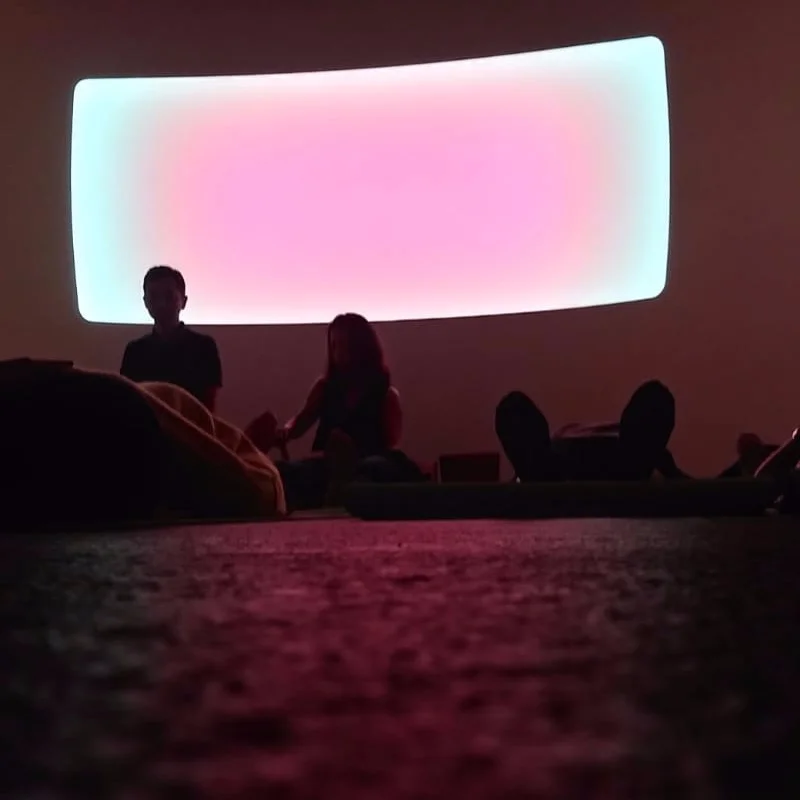




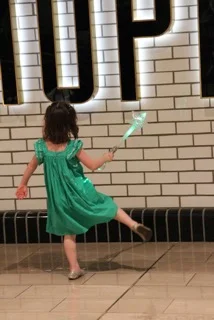


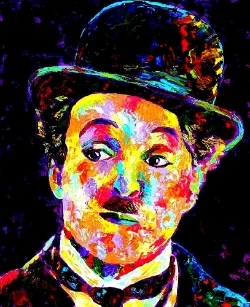















![[VMorel] Street Meditation IMG_5454 - 2017-05-14 at 09-33-56.jpg](https://images.squarespace-cdn.com/content/v1/54e9744ee4b02e8e02363a87/1494726134236-OAPG0JVSIXJFNZ9BGLL6/%5BVMorel%5D+Street+Meditation+IMG_5454+-+2017-05-14+at+09-33-56.jpg)
![[VMorel] Flower IMG_7241 - 2017-03-19 at 07-09-16.jpg](https://images.squarespace-cdn.com/content/v1/54e9744ee4b02e8e02363a87/1494726664812-GHYQ0R5YJBQLN4GM4MQD/%5BVMorel%5D+Flower+IMG_7241+-+2017-03-19+at+07-09-16.jpg)


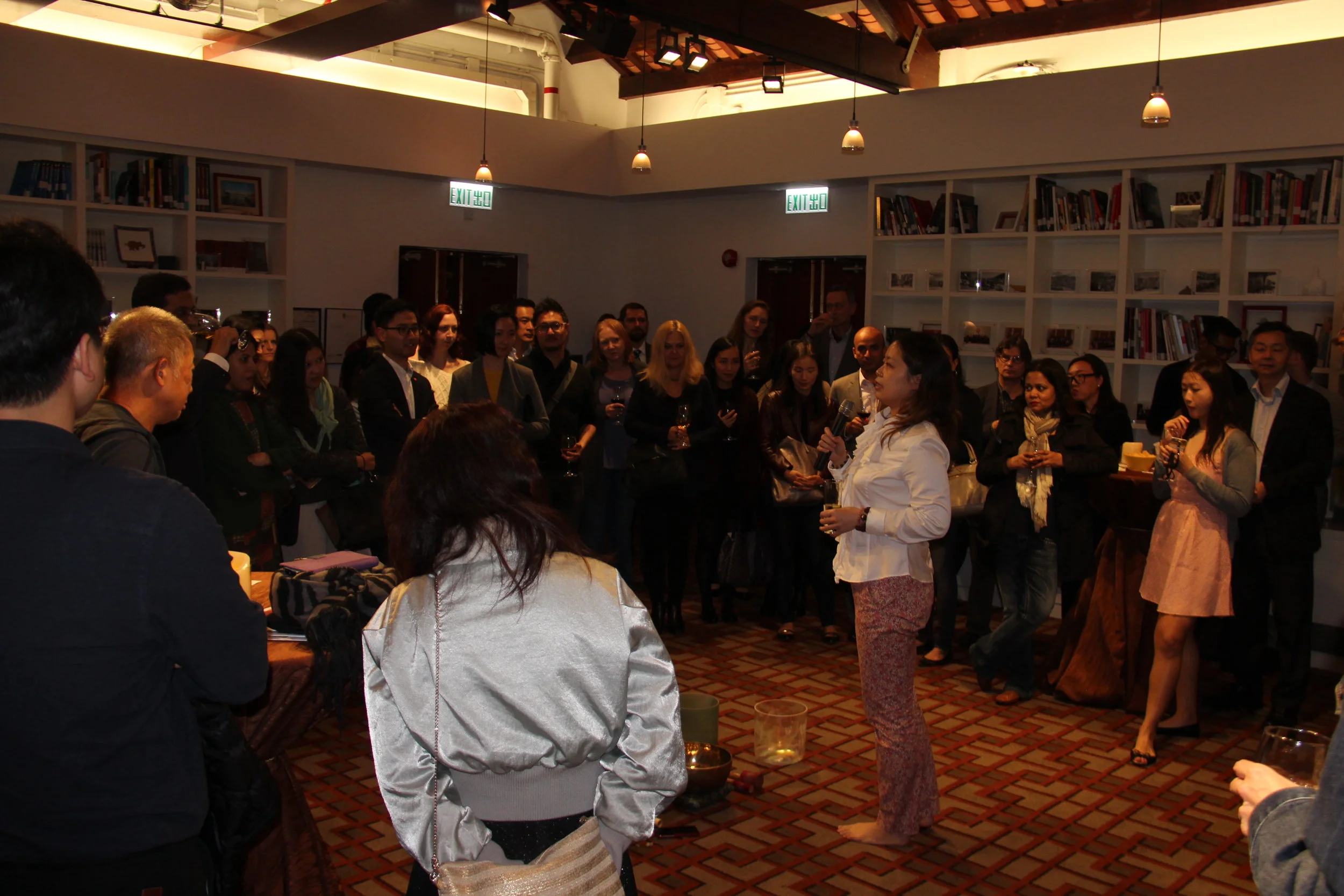
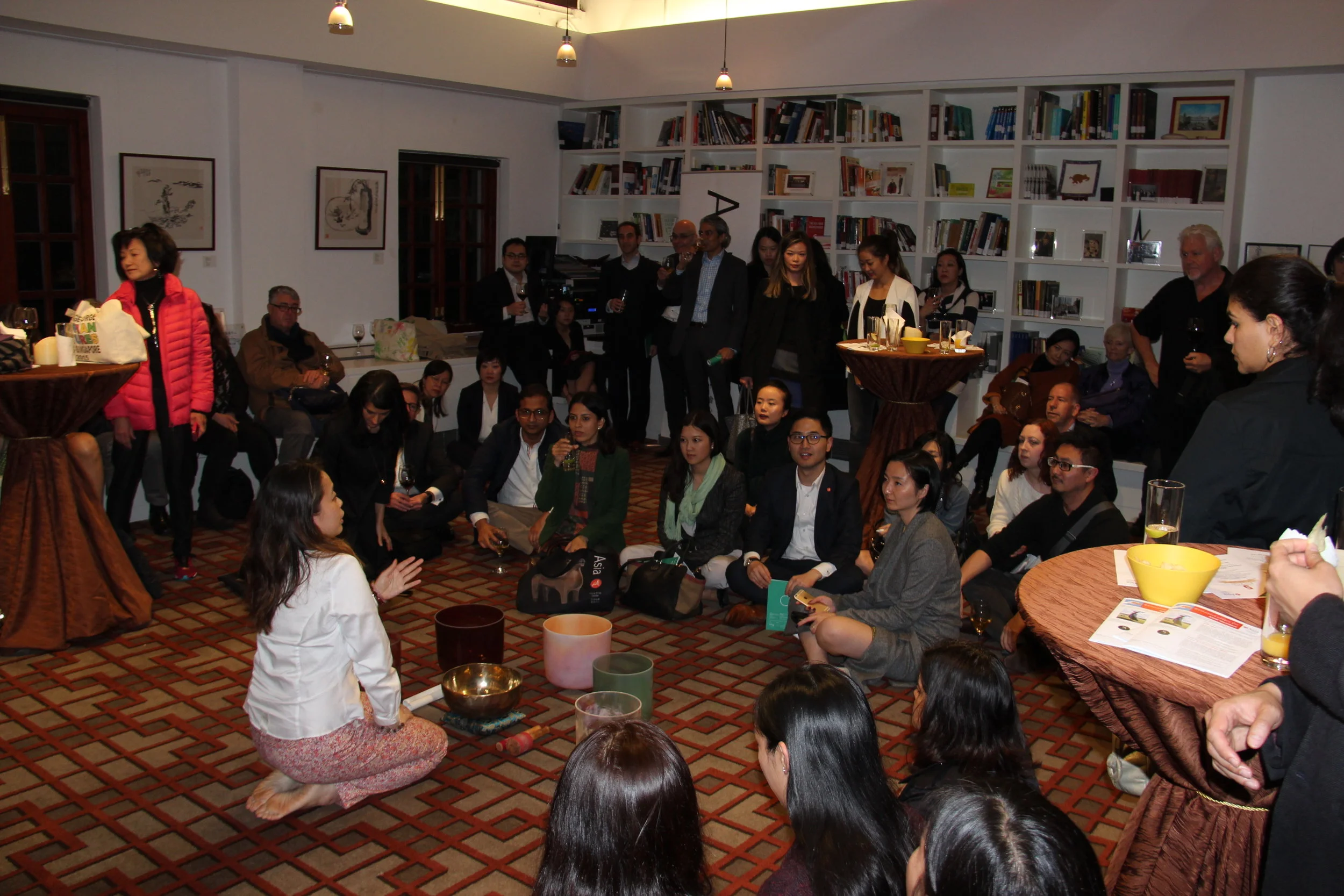
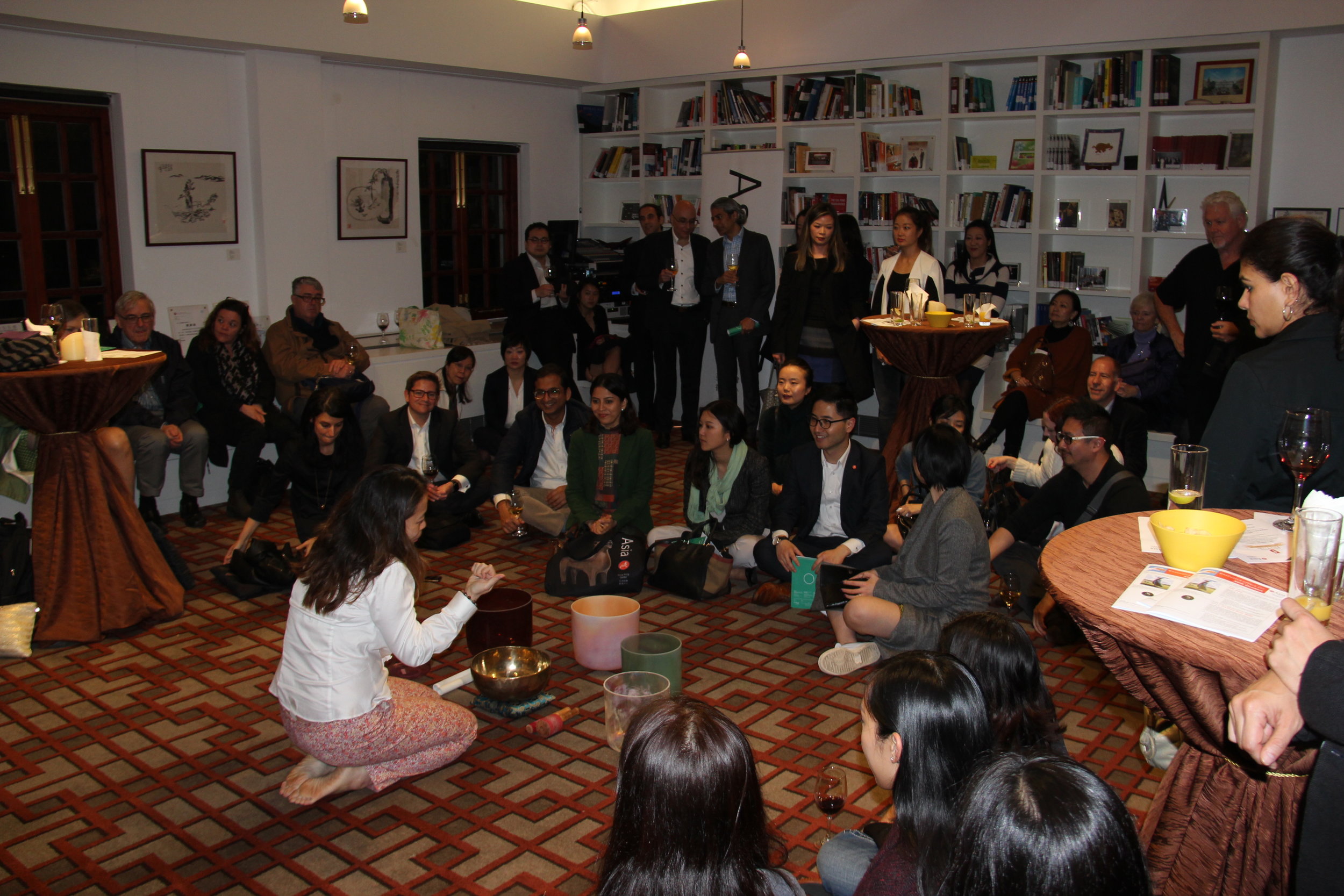
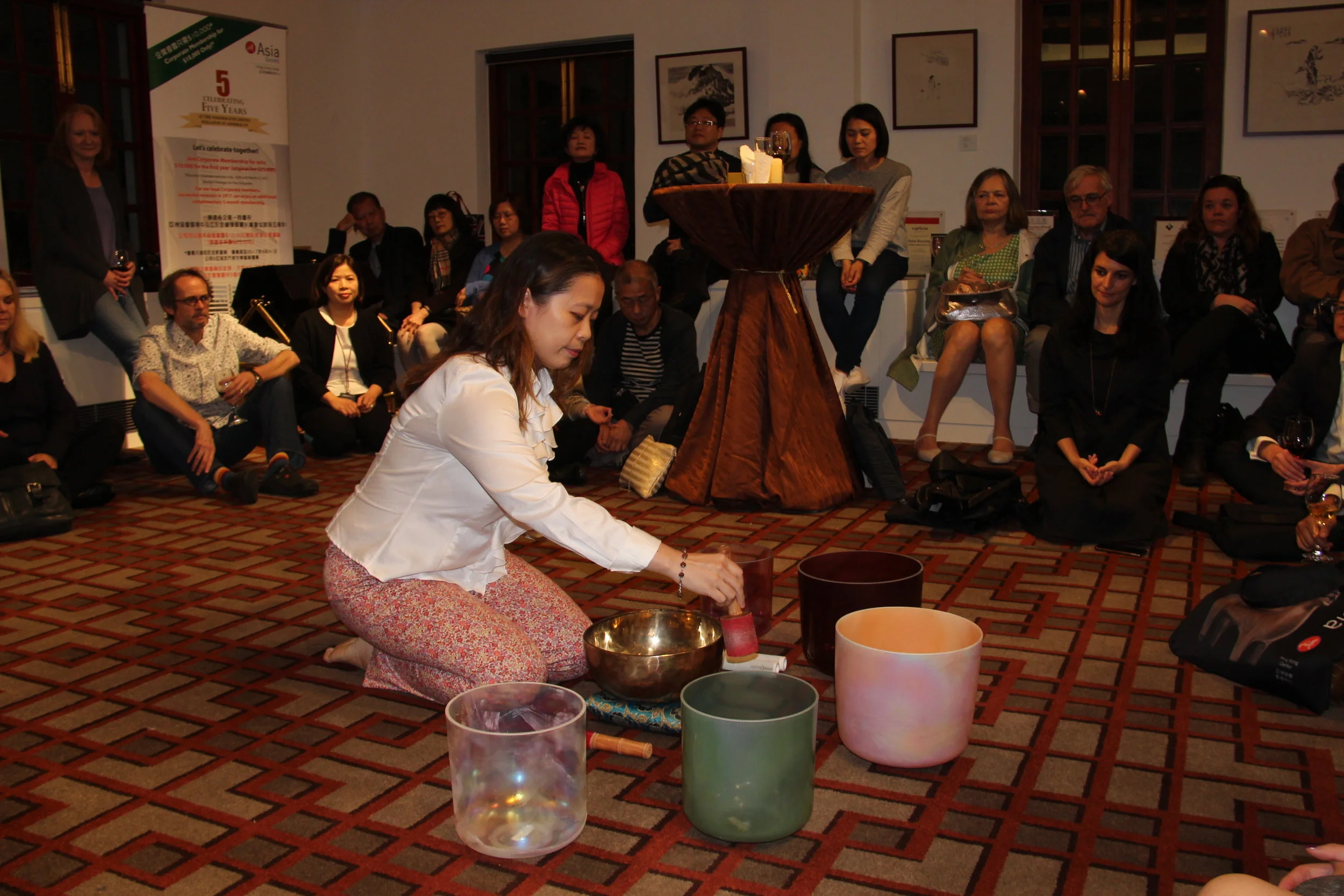
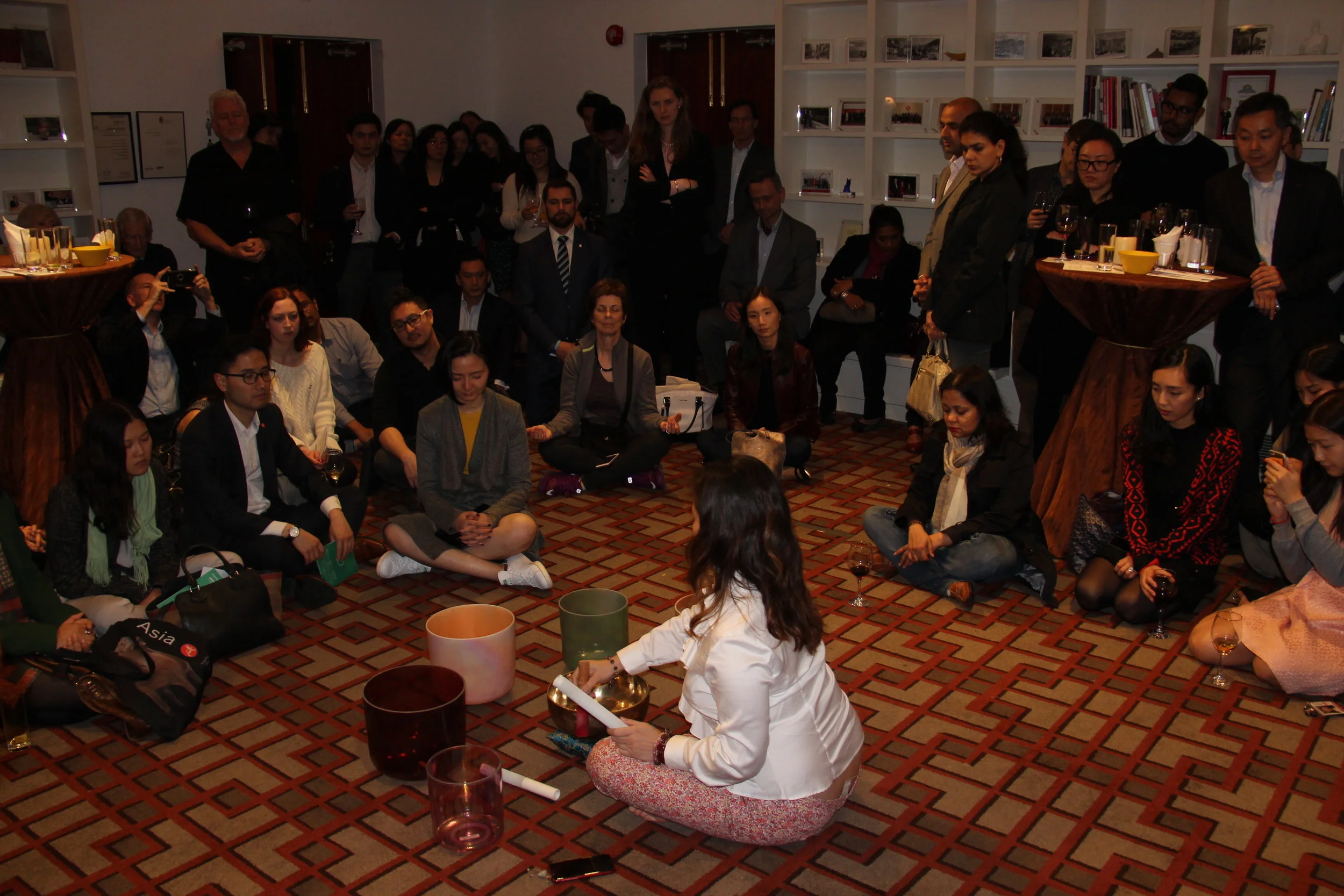






































Authenticity and spiritual intelligence are co-related…